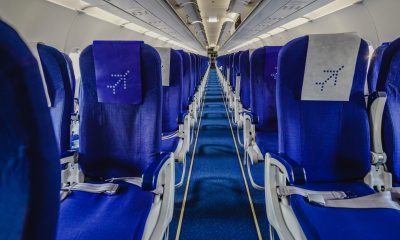By ISAAC TERSOO AGBER
THE aviation sector caters for 3.5 billion passengers globally and is said to be a major facilitator for as much as 25 per bcent of world trade annually, says the International Air Transport Association (IATA). Given the global macro challenges, industry sources estimate that air transport business in major African cities have declined by US$1 per passenger since the slide in oil prices two years ago.
But even with the sliding oil prices, IATA could see huge potential for air transportation in Nigeria, considering the country’s estimated population size of 170 million. The association held that getting the huge population into flying required a sound business policy that would bring about low cost airlines. It also gave a yardstick to the Federal Airports Authority of Nigeria (FAAN) to ensure that the nation’s airports become fully functional if this potential is to be realized.
The state of airports in the country hasn’t won a pass mark yet as the remodelling exercise is still underway while some airports are already rated worse in the process. But even with that, latest reports from the National Bureau of Statistics show that air transport grew by 3.7 percent year-on-year in 2015 and contributed 0.1 percent to total GDP, the equivalence of N63bn or (US$317m).
The report showed an increase of aircraft movement in/out of Nigerian airports in 2015 put at 61,692 approximately 6.9 percent. However, the NBS noted that in the third and fourth quarters of 2015, there were 11.3 per cent and 14.3 per cent fewer domestic flights than in the same quarter of 2014 respectively, which resulted in a total of 46,157 and 50,686 flights in the third and fourth quarters.
It also added that the year-on-year declines in the number of international flights recorded 3.3 per cent and 10.5 per cent in the third and fourth quarters of 2015 respectively, which resulted in a total of 11,547 international flights in third quarter of 2015 and 11,006 in the fourth.
The Bureau also explained that there was a large quarterly increase in domestic flights in the fourth quarter of 2015 (of 9.8 per cent) international flights saw a decline of 541 flights, or 4.7 per cent, reversing the increase of 344 flights (3.1 per cent) recorded in the third quarter.
This revelation indicates that the difference between the number of domestic and international aircraft to pass through Nigeria airports tended to be smaller than the difference between the number of domestic and international passengers, reflecting the fact that international aircraft tended to be larger, and therefore carried more passengers.
The NBS, also recorded a total of 89.5 per cent of cargo movements across the country in the last quarter of 2015 stating that whereas the third quarter of 2015 saw a year on year decline of 13.9 per cent, the fourth quarter saw a year on year increase of 12.8 for the airport.
ALSO SEE: FG determined to deal with safety, security issues in aviation – Sirika
The bureau said that the third quarter of 2015 saw a quarterly increase in the weight of cargo to pass through Nigerian airports of 724,792Kg or 1.8 per cent, to reach 41,636,713kg.
The bulk of the weight of cargo to move through Nigerian Airports it declared went through MMA in Lagos in the second half of 2015.
The data added, “This airport accounted for 91 per cent and 88.2 per cent of the weight in the third and fourth quarters; the decline in the share between these two periods is in spite of an increase in the weight of cargo to move through MMA of 14.8 per cent.
“The decline was mainly the result of a large increase in the weight of cargo to pass through Kano Airport between these periods. Whereas in the third quarter of 2015 the weight of cargo to pass through Kano was 1,681,772kg, this rose by 2,474,862kg (147.2 per cent) to 4,156,634kg in the fourth quarter.
“As a result, Kano significantly increased its share of cargo between the fourth quarters of 2014 and 2015, from 3.3 per cent to 7.7 per cent. Port Harcourt also saw an increase over this period, from 2 per cent to 2.7 per cent, as despite a year on year decrease in the weight of cargo moved of 4.6 per cent, this decrease was considerably less than for Abuja (16.3 per cent) or Calabar (44.4 per cent).”
Typically, the report highlighted the gains in business activities at Nigeria’s airports in the previous years. But with the lagging indicators fuel scarcity, crash of the naira giving rise to high maintenance cost, the Nigeria’s aviation industry may suffer the worst of times in its history this year, 2016.

 Latest5 days ago
Latest5 days ago
 Latest3 days ago
Latest3 days ago
 News2 days ago
News2 days ago
 Energy6 days ago
Energy6 days ago
 Latest4 days ago
Latest4 days ago
 Comments and Issues6 days ago
Comments and Issues6 days ago
 Business6 days ago
Business6 days ago
 Business6 days ago
Business6 days ago












